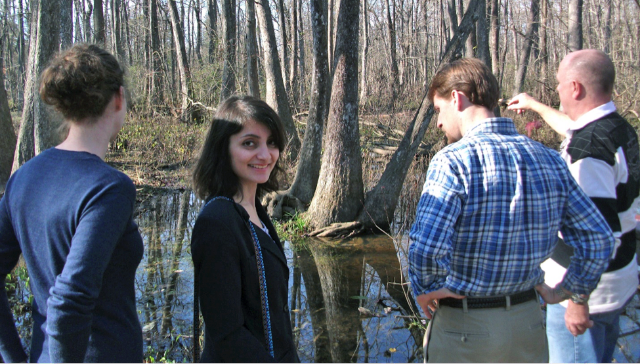How Buddhism came to Korea from Pakistan: Supjaengi Park and the First Sanctuary of Buddhism
This weekend, we headed down south of Korea, making a stop at the city of Yeonggwang. There, we visited a place called Supjaengi park. The really crazy thing about this place we visited was its connections to Pakistan!
The Supjaengi Park isn't really a very touristy place but it does have an aura of peace there. It's relatively small, and as soon as you go over a hill, you arrive at a temple/sanctuary area. It is this temple that is connected to Gandhara.

The view from the hill itself is also wonderful and you can see a hanok village as well as a random display of trees! Indeed a perfect place for a temple.

In 384, a monk called Marananta from Gandhara (present day Pakistan) came to Korea from China bringing with him Buddhist texts and knowledge of the then new religion. Marananta entered the mountains and founded Korea’s first temple, Bulgap-sa, also in Yeonggwang. His records or mentions are found in the Samgungnyusa. These are called, Memorabilia of the Three Kingdoms and it is basically a collection of legends, folktales and historical accounts relating to the Three Kingdom Period (Read my Primer on Korea).
Then, there are another slight of stairs all the way to the larger Buddha.
The Supjaengi Park isn't really a very touristy place but it does have an aura of peace there. It's relatively small, and as soon as you go over a hill, you arrive at a temple/sanctuary area. It is this temple that is connected to Gandhara.

The view from the hill itself is also wonderful and you can see a hanok village as well as a random display of trees! Indeed a perfect place for a temple.

The temple that you see after the hill is really fascinating. It's significance lies in the fact that it commemorates the introduction of Buddhism of the region. You see, Yeonggwang was the birthplace of Korean Baekje Buddhism and the temple was inspired by Gandharan culture. Surprisingly, there wasn't a proper name to this temple but it's called "Birthplace of Baekje Buddhism (백제불교최초도래지).
In 384, a monk called Marananta from Gandhara (present day Pakistan) came to Korea from China bringing with him Buddhist texts and knowledge of the then new religion. Marananta entered the mountains and founded Korea’s first temple, Bulgap-sa, also in Yeonggwang. His records or mentions are found in the Samgungnyusa. These are called, Memorabilia of the Three Kingdoms and it is basically a collection of legends, folktales and historical accounts relating to the Three Kingdom Period (Read my Primer on Korea).
These records narrate that Marananta was the one who brought Buddhism to Baekje, along with Sundo in Goguryeo and Ado in Silla. There are only scant mentions of Marananta in historical records.
Alongside the temple, there is also a Gandharan Culture Hall, or museum, which has a lovely collection of Gandharan sculptures and artifacts from this important period of exchange between cultures.

Next to the temple area you can see the Beopseong Port - a small, quiet fishing community.

In the temple area, you will also encounter stairs leading up to a small section of the temple and then further to a large Buddha!
Alongside the temple, there is also a Gandharan Culture Hall, or museum, which has a lovely collection of Gandharan sculptures and artifacts from this important period of exchange between cultures.

Next to the temple area you can see the Beopseong Port - a small, quiet fishing community.

In the temple area, you will also encounter stairs leading up to a small section of the temple and then further to a large Buddha!
If you climb the stairs, you come across a section of the temple, where there are lots of Buddha statues and also a temple you can pray in.
Then, there are another slight of stairs all the way to the larger Buddha.
Definitely worth visiting to see how different countries and regions have historically been connected through trade, culture and religion.









0 comments